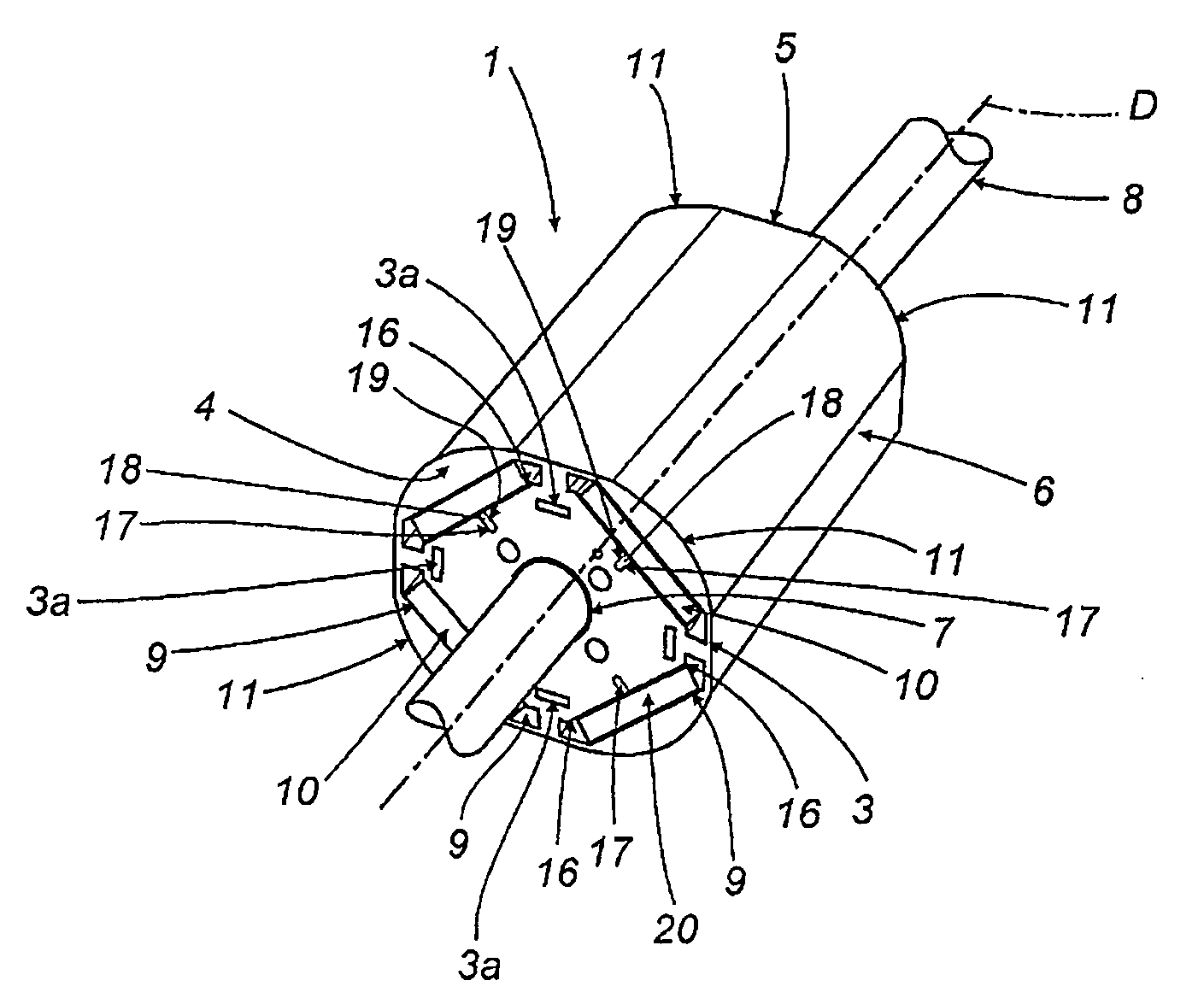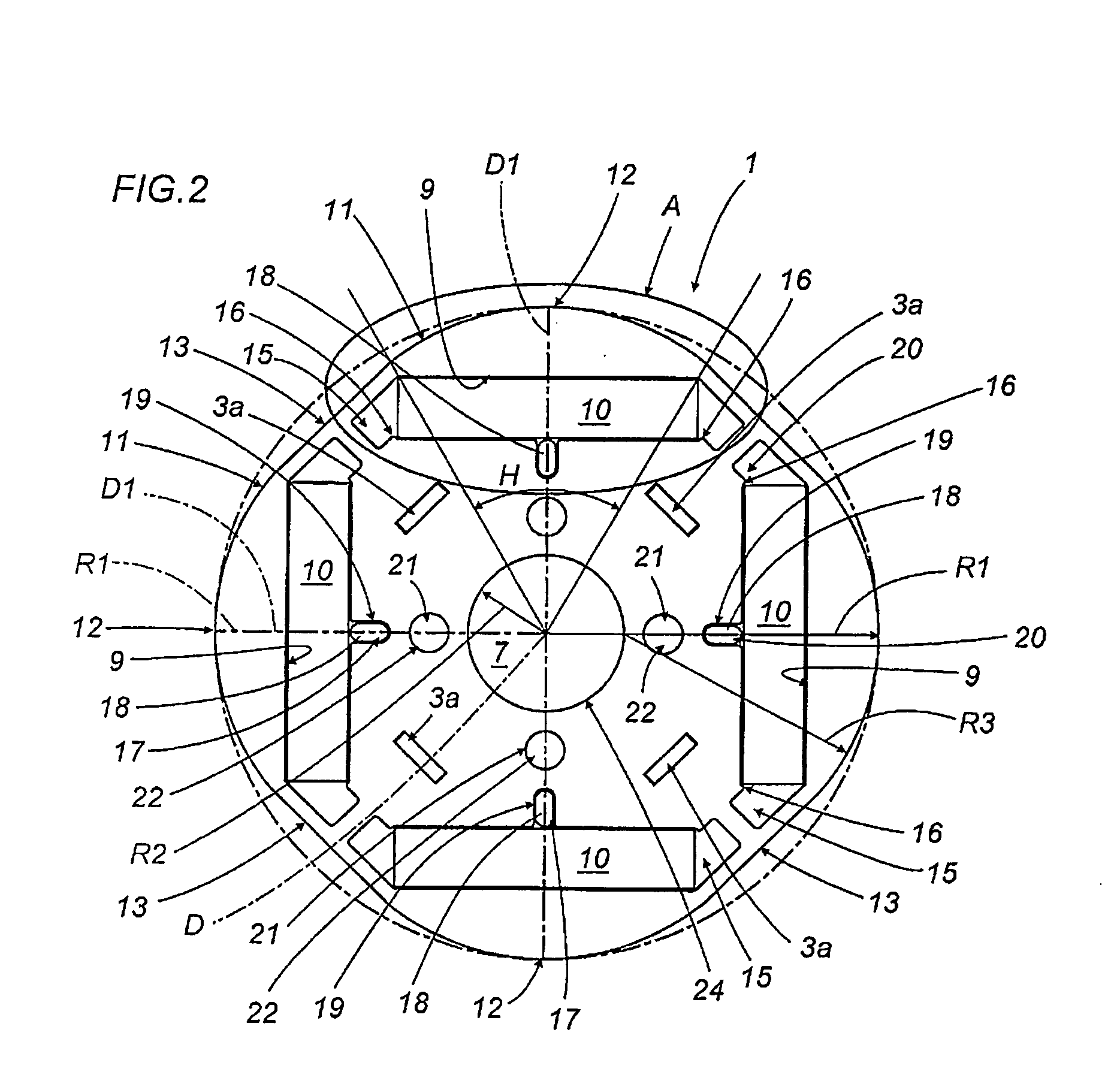Rotor For An Electrical Machine
a rotor and electrical machine technology, applied in the direction of dynamo-electric machines, magnetic circuit rotating parts, magnetic circuit shape/form/construction, etc., can solve the problems of non-uniform angular speed of the rotor, detent torque, cogging torque, etc., and achieve the effect of easy assembly
- Summary
- Abstract
- Description
- Claims
- Application Information
AI Technical Summary
Benefits of technology
Problems solved by technology
Method used
Image
Examples
Embodiment Construction
[0030]With reference to the accompanying drawings, the numeral 1 denotes a rotor, according to the present invention, for an electric motor M.
[0031]As shown in FIGS. 4 and 6, the motor M comprises a stator 200 which accommodates the rotor 1.
[0032]The rotor 1 has a principal axis of rotation D, normally coinciding with the axis of the motor M, and comprises a laminated core 2, that is to say, consisting of a plurality of thin laminations 3 firmly joined to each other by bonding elements 3a (assembled according to what is known as “stacking technology”) delimited by a first and a second end wall 4, 5 and by a lateral surface 6.
[0033]The core 2 has a longitudinal hole 7, whose axis substantially coincides with the principal axis D, for coupling with a motor shaft 8.
[0034]The first and second end walls 4, 5 are preferably parallel with each other. To guarantee this parallelism, the laminations 3 are grouped together in stacks which are bonded to form the laminated core 2.
[0035]Advantage...
PUM
 Login to view more
Login to view more Abstract
Description
Claims
Application Information
 Login to view more
Login to view more - R&D Engineer
- R&D Manager
- IP Professional
- Industry Leading Data Capabilities
- Powerful AI technology
- Patent DNA Extraction
Browse by: Latest US Patents, China's latest patents, Technical Efficacy Thesaurus, Application Domain, Technology Topic.
© 2024 PatSnap. All rights reserved.Legal|Privacy policy|Modern Slavery Act Transparency Statement|Sitemap



